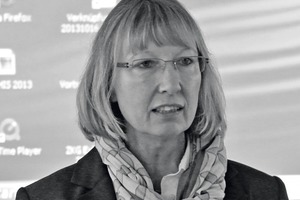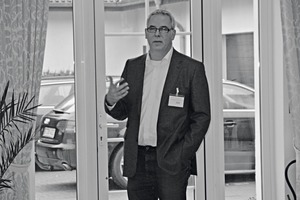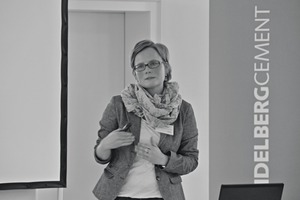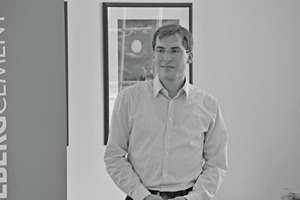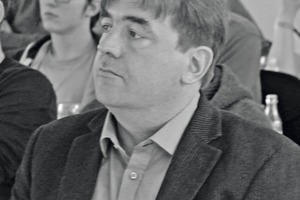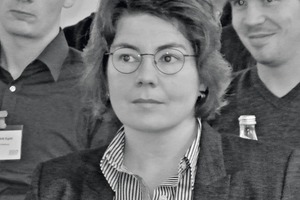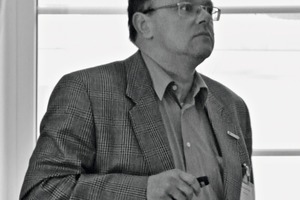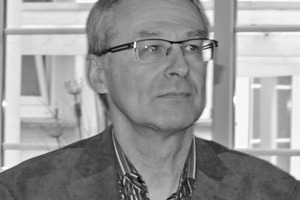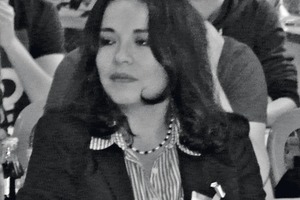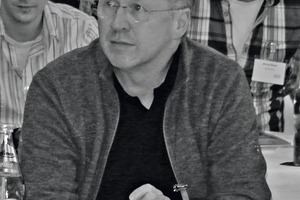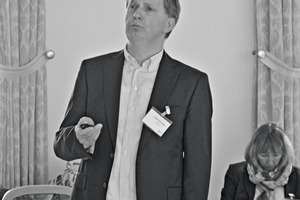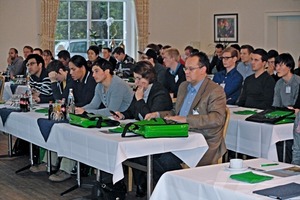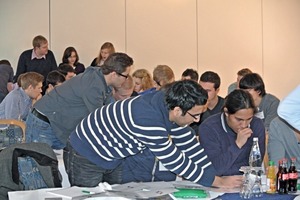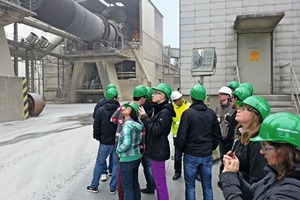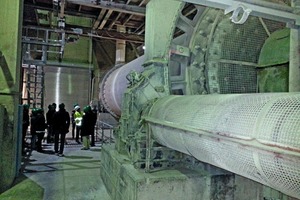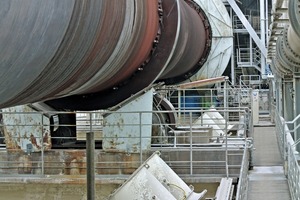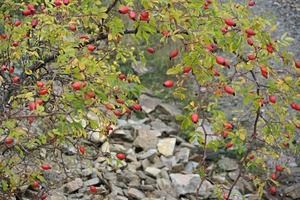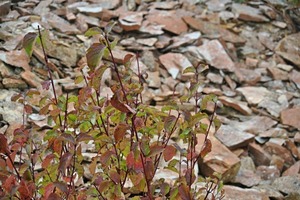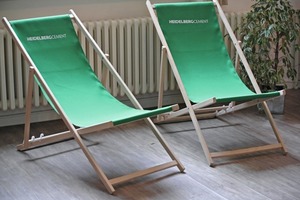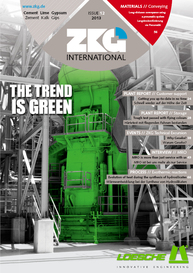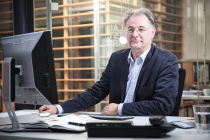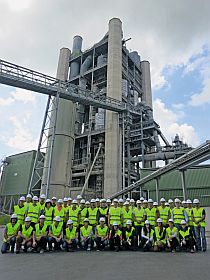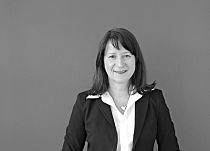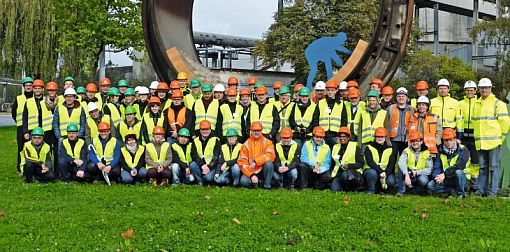Why Geseke?
The audience, representing the participating universities and industry, was welcomed by Christian Reinke, Advertising Manager at ZKG, and Dr. Hubert Baier, for Bauverlag, Marion Kinscher, of HeidelbergCement AG, and Dr. Steffen Gajewski, Manager of the Geseke plant, on behalf of the host.
Dr. Hubert Baier firstly introduced the subject of cement with a description of its production process. His address was followed by a lively group-work session, during which the students replicated what they had just learned by diagrammatically illustrating the process sequence of cement production.
The morning session concluded with a theoretical and practical presentation of the Geseke plant by its manager, Dr. Steffen Gajewski: his introductory address was followed by a short bus trip to the plant itself. The excursion participants, wearing hard hats and goggles for protection, were conducted in three groups in different order through the individual stages of cement production, from the quarry, via raw meal grinding, to the rotary kiln, the control room and then the shipping and silo-storage facilities.
The partners from industry took the podium from the afternoon onward. Addressing the audience in combinations of engineers and human resources experts, these companies outlined their respective main activities in the cement industry, on the one hand, and themselves, as potential employers, on the other.
The first address was by Kerstin Rößler, of ThyssenKrupp Resource Technologies GmbH, who showcased her group from the human resources viewpoint and focussed, in particular, on cement plant engineering. Following a general overview of cement production, Jost Lemke, an engineer working in the field of pyroprocessing/environmental technology, cited a number of practical examples to illustrate the potentials for process optimisation, spotlighting, for instance, alternative fuels, waste-gas scrubbing and clinker coolers.
FLSmidth Pfister GmbH, of Augsburg, was represented by Thomas Jennewein, its Product Specialist Alternative Fuels. He firstly gave a short outline of the company’s history, and then proceeded to examine the use of rotor weighfeeders in metered conveying of bulk products, in raw meal and substitute fuel feed systems, for example.
Dr. Caroline Woywadt and Carsten Vieth closed the afternoon session with a presentation of Gebr. Pfeiffer SE (GPSE), of Kaiserslautern. Dr. Woywadt began her technical address with the use of the various mill types for the grinding processes necessary in cement production, and then went on to discuss the work of the GPSE Technology Centre in the context of grindability tests. The example she had selected – the structure of a vertical mill installed in Balaji, India – enabled her to illustrate vividly not only the technical aspects of the mill’s operation, but also everyday engineering life. Carsten Vieth then discussed the company’s human resource programmes.
The first day of the excursion concluded at the Lippstädter-Brauerei Thombansen, an independent brewery founded in 2000. Over the first beer of the evening, in an entertaining talk, Daniel Thombansen – the master brewer in person – explained with evident enthusiasm to the excursion participants the creativity and diversity of the art of brewing. The evening ended in a closed event for our group in the Thombansen brewery, with the very best of catering and a convivial beer-tasting session.
Dr. Ulrich Zielinski, Area Sales Manager Central and Eastern Europe for Refratechnik Cement GmbH, of Göttingen, presented his globally active medium-sized enterprise, a leader in refractories technology. He devoted his paper to innovations in refractory materials for the cement industry, and also examined the “soft skills” vital for a career in engineering, such as languages, travel, and the communications capabilities necessary for conference papers and presentations.
Sofía Dávalos de Hartert and Jörg Hammerich again made up an HR specialist/engineer “speaker duo”. Sofía Dávalos de Hartert presented the “smallest” participating enterprise, IKN GmbH, of Neustadt, Lower Saxony, with just 130 employees. Technology Director Jörg Hammerich showcased his company, a producer of clinker cooler installations.
Josef Ciecierski, Project Manager Plant and Automation at Siemens AG, provided a contrast to a small-sized company with his presentation of his large group. The focus of his address to the audience was on the applications for a range of different drive technologies in cement production. Various young engineers reported on their experience of Siemens as an employer in the context of a corporate video.
Marion Kinscher, Head of Personnel Development Germany at HeidelbergCement AG, presented the host company in a video on its 140-year corporate history. With HeidelbergCement, she highlighted one of the industry’s largest global players. The company’s recruitment and personnel development activities and opportunities, showed it to be an attractive potential employer, one which is, however, also an “international group working in tandem with medium-sized enterprise structures at the more local level”, since the sales markets for cement extend across an only relatively small radius of some 120 km around each individual plant. Following her impressive examination of her group, Marion Kinscher also had a most welcome “farewell surprise” in store for all the excursion participants from the universities and from industry: all received a group photo taken the previous day at the Geseke plant, held in a small clasp which (of course!) was embedded in a small cube of concrete.
The following concluding discussion was brought to an end by Prof. Dr. Martin Geweke, of Hamburg University of Applied Sciences, in the form of a résumé of the excursion from the universities’ viewpoint: as he noted, the excursion had given students of all relevant disciplines valuable insights into the cement industry, with its “almost primeval but nonetheless filigree technology”. In view of depleted university budgets, the ZKG student excursions provided, for both theory and teaching, an invaluable channel for interchange of information, contacts and communication – by no means a matter of course nowadays.
ZKG INTERNATIONAL wishes to take this opportunity of thanking HeidelbergCement AG for its kind support and for its extremely successful arrangements for the student excursion to Geseke. We also wish to express our gratitude to our industrial partners for their support and assistance, and for their excellent cooperation. The technical bandwidth of cement producers, plant engineers, and subsuppliers assured a comprehensive overview of potential fields of employment for young engineers; the overall picture of the industry was augmented in an exemplary manner by the broad range of companies, extending from small and medium-sized enterprises, up to and including major industrial groups. We wish the participating students all success in their further studies, and trust that they have gained useful ideas for their possible future working lives in the cement industry.

